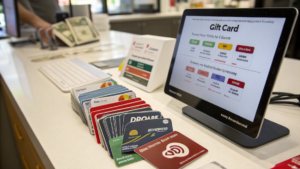Are Grocery Paper Bags Truly Strong Enough for Our Needs?
You might think grocery paper bags are just simple carriers. But have you ever stopped to wonder about their true strength and impact? Do they really hold up, and are they truly better for the planet?
Grocery paper bags offer surprising strength, often holding 10-15 pounds, especially with reinforced seams. Their real "strength" lies in their environmental benefits like biodegradability and recyclability, making them a better choice than plastic for many.
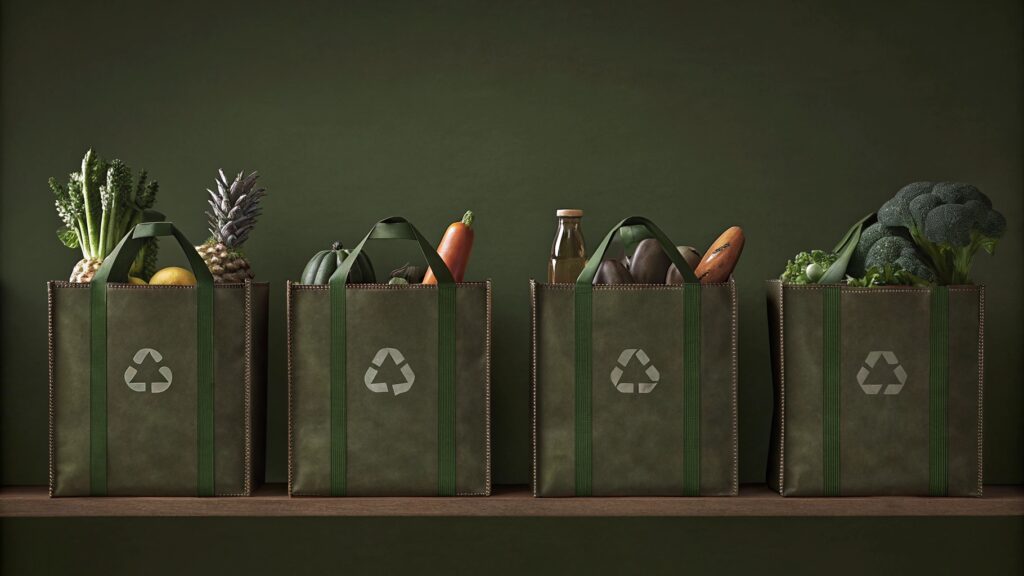
I have always been fascinated by how we carry our groceries. For years, plastic bags were everywhere. Then, paper bags made a big comeback. On the surface, paper bags seem like a clear winner for the environment. But I have learned that the story is more complex. I want to share my insights on their true strength, both in carrying power and in their impact on our world.
Why Did We Stop Using Paper Grocery Bags?
You might remember a time when paper bags were common. Then they seemed to disappear, replaced by plastic. Do you wonder why this happened, and what made plastic take over?
We largely stopped using paper grocery bags1 due to the perceived convenience and lower production cost of plastic bags. Plastic bags were lighter, more compact, and cheaper to make and transport, leading to their widespread adoption by retailers and consumers.
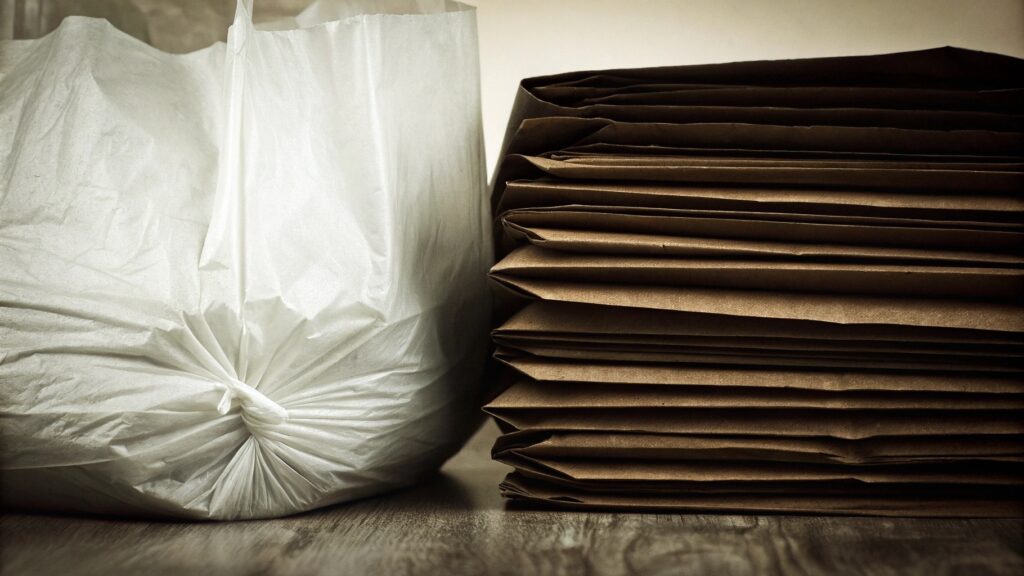
I have seen this shift over the years. Plastic bags felt easy. They were thin, could be stuffed anywhere, and did not tear if they got wet. But I also remember the huge pile of plastic bags2 under my sink. This made me think about the real cost of convenience. Let's look at the reasons for this change and the push back to paper.
What Led to the Decline of Paper Bags?
The move from paper to plastic was driven by several factors. These reasons were mostly about money and ease of use. But they did not fully consider the long-term effects.
- Cost: Plastic bags were much cheaper to make than paper bags. This saved stores a lot of money.
- Convenience: Plastic bags were lighter and took up less space. They were easy for stores to store and for customers to carry.
- Durability (Wet Conditions): Plastic bags did not rip when wet. Paper bags often did, especially in the rain.
- Marketing: Companies pushed plastic as the modern, efficient choice.
| Factor | Paper Bag Characteristics | Plastic Bag Characteristics | Impact on Usage |
|---|---|---|---|
| Production Cost | Higher due to raw material and manufacturing. | Lower due to synthetic polymers and efficiency. | Retailers preferred plastic to save money. |
| Weight & Bulk | Heavier and bulkier to transport and store. | Lighter and more compact. | Easier for stores to handle; less shipping cost. |
| Wet Strength | Weakens significantly when wet. | Maintains strength when wet. | Customers preferred plastic for rainy days. |
| Reusability | Limited reuse due to tearing. | Can be reused, but often discarded after one use. | Perceived as less durable for multiple trips. |
| Environmental Perception | Initially seen as resource-intensive. | Initially seen as convenient, later as polluting. | Early focus was on production cost, not eco-impact. |
I remember my early days working with different materials. The push for efficiency was always strong. Plastic seemed like the clear winner then. But looking back, I realize we did not fully understand the consequences. Now, we are correcting that course. It is about balancing ease with responsibility.
Are Paper Grocery Bags Better Than Plastic?
You might assume paper bags are always the best choice for the environment. But is it truly that simple? Are paper grocery bags definitively superior to plastic ones in every way?
While often seen as better, the superiority of paper grocery bags over plastic is nuanced. Paper bags are biodegradable and recyclable, but their production uses more energy and water. Plastic bags have a higher carbon footprint for disposal but are more efficient to produce and transport.
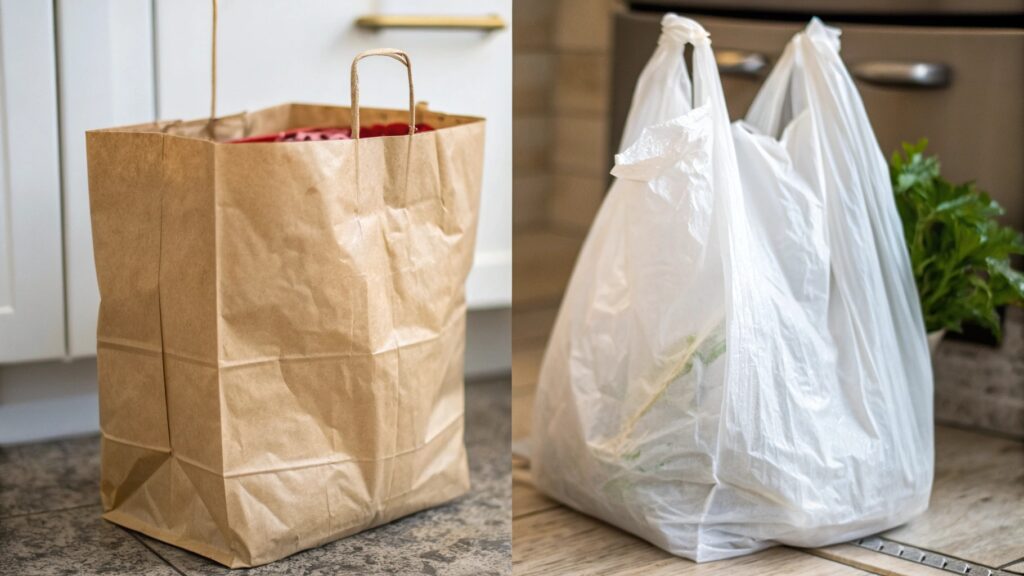
I have always believed in looking beyond the obvious. When it comes to paper versus plastic, it is easy to pick a side. But my experience tells me that the full picture is more complicated. I want to explain the different environmental impacts so you can make informed choices.
What Is the True Environmental Impact?
Comparing paper and plastic bags involves looking at their entire life cycle. This means from how they are made to how they are disposed of. Each type has its pros and cons.
- Raw Materials: Paper comes from trees, a renewable resource. Plastic comes from fossil fuels, a non-renewable resource.
- Production: Making paper bags uses more water and energy than making plastic bags.
- Transport: Paper bags are heavier and bulkier, meaning more fuel is used to transport them.
- Disposal: Paper bags biodegrade and can be recycled more easily. Plastic bags break down into microplastics and are harder to recycle.
| Environmental Aspect | Paper Bag Impact | Plastic Bag Impact | Overall Implication |
|---|---|---|---|
| Raw Material Source | Renewable (trees) | Non-renewable (fossil fuels) | Paper supports sustainable forestry if managed well. |
| Water Usage | High water consumption in pulp production. | Lower water consumption. | Paper production can strain water resources. |
| Energy Consumption | Higher energy demand for manufacturing. | Lower energy demand for manufacturing. | Plastic production is more energy efficient per bag. |
| Greenhouse Gas Emissions | Higher during production and transport. | Lower during production, higher during disposal. | Emissions depend on full life cycle analysis. |
| Biodegradability | Decomposes naturally. | Does not biodegrade, breaks into microplastics. | Paper is better for preventing long-term pollution. |
| Recyclability | Widely recyclable, though can be resource-intensive. | Less widely recycled; problematic for ecosystems. | Paper has a more established recycling infrastructure. |
| Reusability | Less durable for multiple reuses. | Can be reused, but often discarded quickly. | Reusable bags are the best option for long-term use. |
I have seen many debates on this topic. It is not about one being perfectly good and the other perfectly bad. It is about understanding the trade-offs. For me, the biodegradability of paper and its renewability make it a better long-term choice, despite its higher production impact. It is about minimizing harm to our planet.
How Many Reusable Grocery Bags Do I Need?
You might be ready to switch to reusable bags. But how many do you actually need to make your shopping trips easy? Are you unsure about the right number to own?
You typically need 5-10 reusable grocery bags for average weekly shopping, considering different sizes for various items and ensuring you always have some clean and ready. This range covers a full shopping trip and allows for laundry cycle3s without running out.
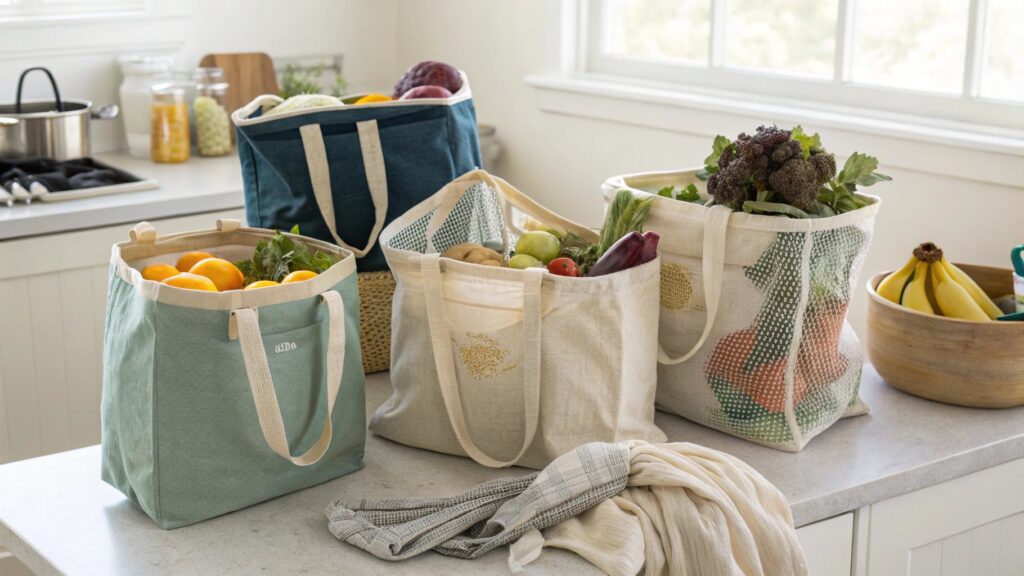
I have helped many people make the switch to reusable bags. One common question I hear is "How many?" It seems simple, but having the right number makes a big difference in how smoothly your shopping goes. I will share my advice on how to figure out what works best for you.
What Is the Right Number for Your Shopping Habits?
The ideal number of reusable bags depends on how often you shop, how much you buy, and what you buy. It is not a one-size-fits-all answer. Think about your routine.
- Shopping Frequency: Do you shop once a week or many times?
- Load Size: Do you buy a few items or fill a whole cart?
- Item Types: Do you buy heavy bottles, delicate produce, or bulky toilet paper?
- Storage: Where will you keep your bags at home and in your car?
| Shopping Habit | Recommended Bag Count | Reasoning | Bag Types |
|---|---|---|---|
| Small, Frequent Trips | 3-5 bags | Covers a few items; easy to keep in car or purse for impulse buys. | A few medium-sized standard bags, maybe one or two smaller ones. |
| Weekly Family Shop | 8-12 bags | Accommodates a full cart; allows for sorting by item type (e.g., produce). | Mix of large standard bags, some insulated bags for cold items, and mesh bags. |
| Bulk Buying/Warehouse Trips | 12-15+ bags | Needed for very large hauls; multiple trips to car; heavy items. | Mostly large, heavy-duty bags, some extra-large for bulky items. |
| Specific Needs (e.g., farmers market) | Add 2-3 specialty bags | For delicate produce, specific shapes, or temperature control. | Mesh produce bags, insulated bags, wide-bottomed bags for fragile items. |
| Backup/Laundry Cycle | Always add 2-3 extra | Ensures you always have clean bags available while others are being washed. | Standard sturdy bags. |
I always tell people to start with a number that feels comfortable. You can always add more later. The main thing is to make it a habit to bring them. I keep a few folded in my car, a few by the door, and a few in my everyday bag. This way, I am never caught without them. It is a small change that makes a big difference for the planet.
Conclusion
Grocery paper bags are stronger than they seem, both in carrying power and environmental benefits. While not perfect, they are a step up from plastic. My journey shows that choosing them, or even better, reusable bags, helps build a better future.


